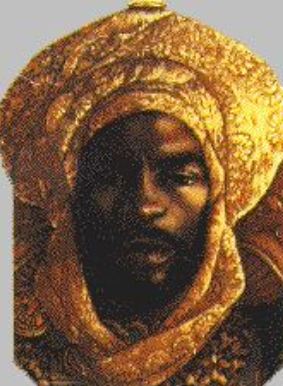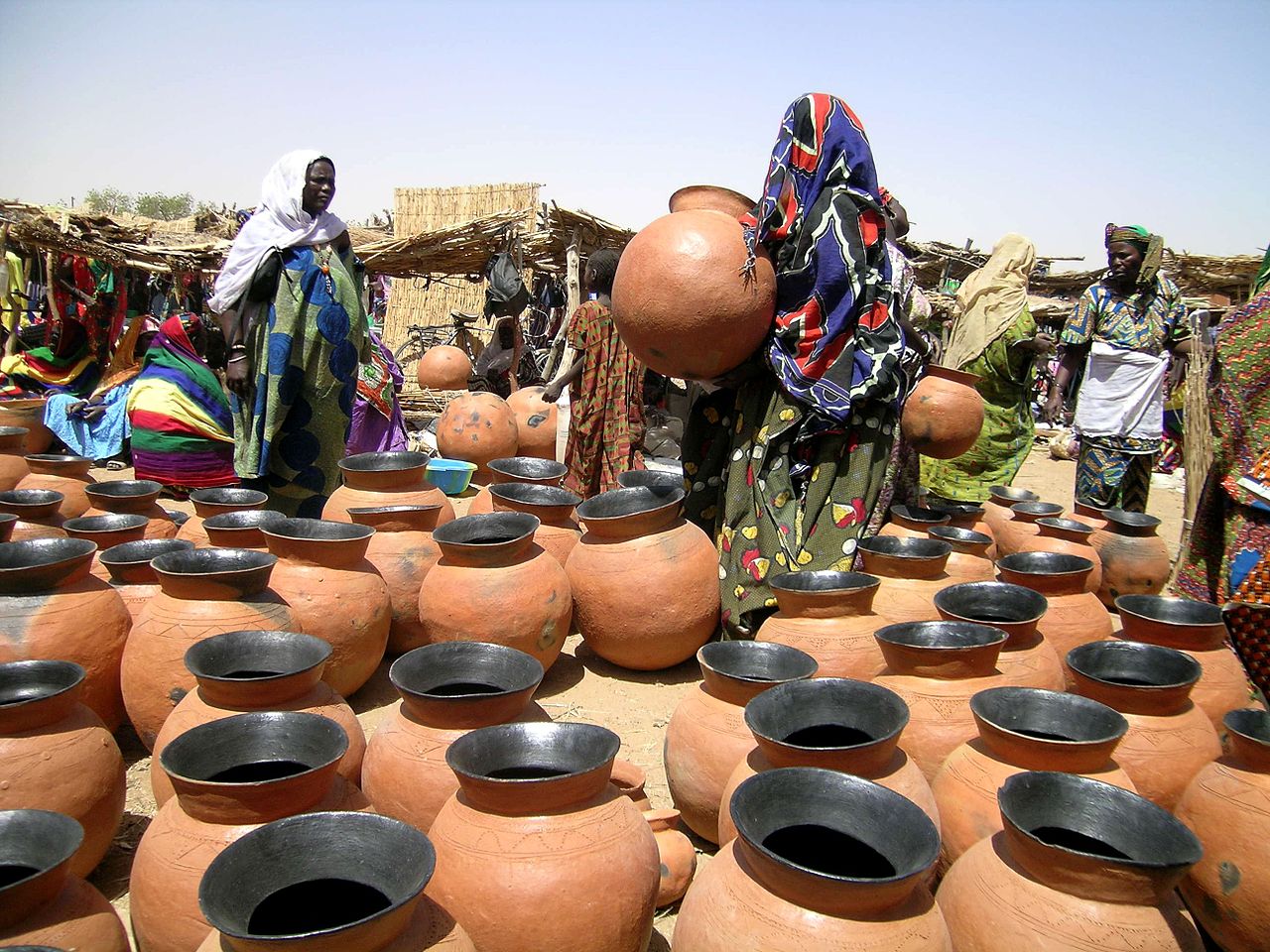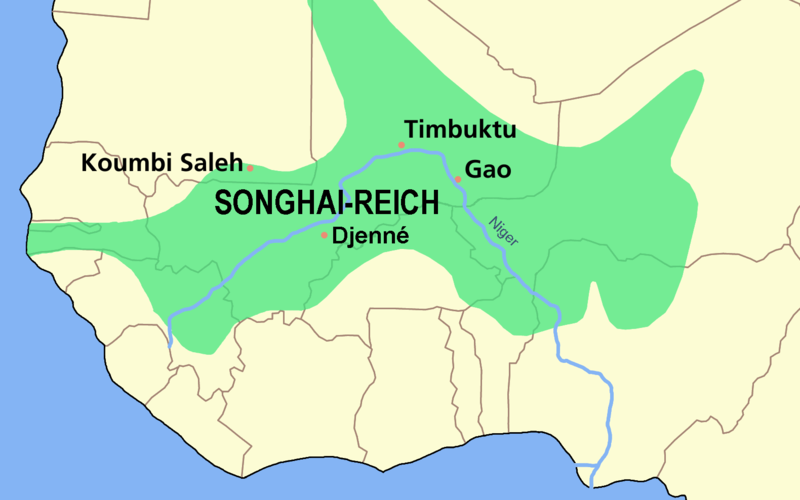The Empire of the Songhai
In the 15th century, the Songhai (pronounced song-gahy) took over prevalence over the once powerful Mali Empire. Their feared mounted warriors conquered Timbuktu and thereafter the rest of the country. The Songhai Empire was situated alongside the Niger. Gao became its new capital city. She was located at the eastern bow of the river Niger, where agriculture could still be carried out.
The founder of the Songhai Empire

Songhai and Morocco - Rivals in Westafrica

The Songhai’s military was so powerful that they were able to keep rivalling tribes at bay. But they were not prepared for Morocco’s rulers. Morocco wanted to win supremacy over North Africa. They had purchased firearms from European traders, through which they were able to defeat the rider’s armies of the Songhai. By the end of the 16th century, Timbuktu fell into the hands of the Moroccans. They acquired large amounts of gold, which they hauled to Marrakesh by caravans. The Songhai Empire was shattered. The conquerors placed a shadow king on the throne of the former Songhai Empire. But they were not able to rule the Empire for very long. The route across the mountains and through the desert was simply too long and weary.
The Rise of Timbuktu

Timbuktu experienced its glory days in the 15th and 16th century, after the downfall of the metropolis Walata. Walata was considered to be the metropolis of caravans. Salt caravans from the North and gold caravans from the South met here. With a population of 15.000 to 25.000 inhabitants the city was fairly big for those days. Trading with salt and gold had enriched the residents. They also traded with slaves from the Mossi land. They were meant for the dynasties in Morocco and Egypt. When the European powers built their trading bases at the West African coastline, Timbuktu became the new centre of trade at the edge of the Sahara. The traders offered weapons, horses, silk and jewellery. Furthermore, Timbuktu developed into the centre of Islamic spiritual life in West Africa. As a result of the Moroccan conquest 1591, the Songhai era ended.


